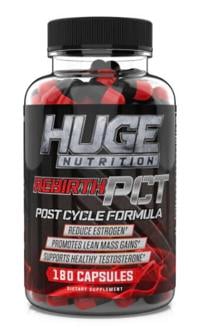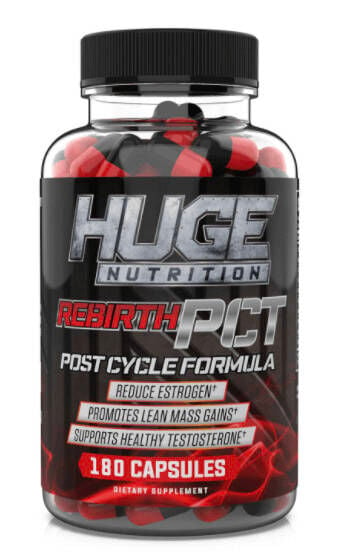Post Cycle Therapy Sarms (PCT) is essential to regulate hormones and minimize potential side effects of SARMs. It involves using compounds like Nolvadex, Clomid, Raloxifene, and Aromatase Inhibitors to restore natural testosterone levels after a SARMs cycle.
Post Cycle Therapy (PCT) is crucial in the world of SARMs to maintain hormone balance and prevent adverse effects. It typically involves using compounds like Nolvadex, Clomid, and Aromatase Inhibitors to support the body’s natural testosterone production. Understanding the significance of proper PCT can help SARMs users to maintain their gains and overall well-being.
Additionally, it is important to be aware of the potential risks associated with not implementing a proper PCT after a SARMs cycle. Taking a proactive approach to post-cycle therapy can make a significant difference in the overall success and safety of SARMs use.

Credit: www.sfexaminer.com
What Is Post Cycle Therapy (pct) And Why Is It Important?
Post Cycle Therapy (PCT) is vital for rebalancing hormones and preventing side effects after taking SARMs. It helps to kickstart natural testosterone production and minimize estrogen conversion, supporting your body’s recovery post-cycle. Effective PCT options include Nolvadex, Clomid, and Aromatase Inhibitors to restore hormonal balance and maintain gains.
Purpose Of Pct
Importance Of Pct For Sarms Users
What is Post Cycle Therapy (PCT) and Why is it Important?
Post Cycle Therapy (PCT) refers to a protocol followed by individuals who have completed a cycle of SARMS or other performance-enhancing substances. PCT plays a crucial role in restoring the body’s natural hormonal balance after the use of SARMS, ensuring a smooth transition and minimizing adverse effects.
Purpose of PCT:
- Restore endogenous testosterone production
- Prevent estrogen conversion
- Minimize muscle loss
Importance of PCT for SARMS users:
- Prevents hormonal imbalances: SARMS can suppress natural testosterone production, leading to hormonal imbalances that can affect overall health.
- Minimizes side effects: PCT helps reduce the risk of side effects such as gynecomastia and mood swings associated with SARMS use.
- Promotes post-cycle recovery: By aiding in hormone normalization, PCT supports the body’s recovery process post-SARMS cycle.

Credit: www.sfexaminer.com
Understanding Sarms
Post cycle therapy for SARMS is crucial to restore hormonal balance. Consider supplements like Nolvadex or Clomid to aid in the recovery process. Maintaining gains after a SARMS cycle through proper PCT is essential.
Brief Introduction To Sarms
SARMs, or Selective Androgen Receptor Modulators, are compounds that bind to androgen receptors in the body to promote muscle growth.
They are commonly used in fitness and bodybuilding for their anabolic effects, similar to steroids but with less side effects.
How Sarms Affect Hormonal Balance
SARMS impact hormonal balance by targeting specific androgen receptors, influencing testosterone levels.
This modulation aids in muscle development and recovery post-cycle, essential for avoiding the negative effects of hormonal imbalances.
The Science Behind Pct For Sarms
Post Cycle Therapy (PCT) is crucial after using Selective Androgen Receptor Modulators (SARMS) as it helps in restoring the body’s natural hormone levels.
Impact Of Sarms On Testosterone Levels
SARMS can significantly impact testosterone levels in the body. Due to their androgenic effects, SARMS can suppress natural testosterone production, leading to a hormonal imbalance.
Recovery Of Hpta (hypothalamic-pituitary-testicular Axis)
The HPTA plays a crucial role in the regulation of testosterone production. SARMS can disrupt this axis, impacting the body’s ability to maintain normal hormonal levels. Proper PCT is essential to support the recovery of HPTA and restore hormonal balance.
Common Sarms And Their Pct Requirements
For effective Post Cycle Therapy after using SARMS, consider options like Nolvadex, Clomid, Raloxifene, and Aromatase Inhibitors. These supplements aid in balancing hormones, supporting muscle gains, and preventing potential side effects post-cycle. Proper PCT is crucial for restoring natural testosterone levels and overall well-being.
Specific Pct Protocols For Different Sarms Compounds
When it comes to using SARMS for performance enhancement, it’s important to understand the specific post cycle therapy (PCT) requirements for different compounds. Each SARMS compound interacts with the body in a unique way, which means the PCT protocol will vary depending on the compound used.
Duration And Dosage Of Pct
The duration and dosage of PCT will also vary depending on the SARMS compound used and the individual’s goals. It’s important to follow a properly structured PCT regimen to ensure a smooth transition back to natural hormone production and to maintain the gains made during the cycle. To provide a clear understanding of the specific PCT requirements for different SARMS compounds, let’s take a closer look at a few common SARMS and their corresponding PCT protocols:
| SARMS Compound | PCT Protocol |
|---|---|
| Ostarine (MK-2866) | Typically, a mild PCT with over-the-counter supplements may be sufficient for Ostarine due to its relatively low suppression of natural testosterone production. |
| Ligandrol (LGD-4033) | Ligandrol can cause moderate suppression of natural testosterone levels. As a result, a slightly more aggressive PCT protocol is often recommended, including the use of selective estrogen receptor modulators (SERMs) such as Nolvadex or Clomid. |
| Andarine (S4) | Andarine is known for its strong androgenic effects, which can lead to more significant suppression of natural testosterone production. A PCT protocol including SERMs and testosterone boosters is recommended to help restore hormone balance. |
By understanding the specific PCT requirements for different SARMS compounds, individuals can ensure they are providing their bodies with the support needed to recover and maintain their gains. It’s important to note that PCT protocols should always be tailored to the individual and their specific circumstances, so it’s recommended to consult with a healthcare professional or expert in the field. Overall, post cycle therapy is a crucial component of using SARMS responsibly and intelligently. By following the appropriate PCT protocol, individuals can help restore their hormone levels, mitigate side effects, and safeguard their gains. Remember, always prioritize your health and well-being when incorporating SARMS into your fitness regimen.
Best Practices For Pct After Sarms Cycle
Nutritional Support During Pct
During post-cycle therapy (PCT) after a SARMS cycle, it’s crucial to focus on nutritional support to aid recovery. Including a balanced diet with emphasis on lean proteins, healthy fats, and complex carbohydrates can help in replenishing essential nutrients. Additionally, consuming dietary supplements such as vitamins and minerals can play a vital role in supporting overall health and recovery.
Incorporating Exercise And Rest For Recovery
Exercise and rest are both significant factors in the recovery process after a SARMS cycle. Incorporating moderate exercise can help maintain muscle mass and aid in natural testosterone production. Additionally, allowing the body ample time for rest is essential for proper recovery.

Credit: google.com
Potential Risks And Side Effects Of Neglecting Pct
Neglecting PCT after a Sarms cycle can lead to potential risks and side effects. Without proper post cycle therapy, it becomes difficult for the body to restore natural testosterone production, which can result in serious complications. It is crucial to kickstart endogenous testosterone production and regulate hormone levels to maintain gains and avoid excess estrogen conversion.
Estrogen Rebound Effects
One of the potential risks of neglecting post cycle therapy (PCT) after using SARMs is the possibility of experiencing estrogen rebound effects. SARMs, or selective androgen receptor modulators, are designed to target androgen receptors in the body, which can lead to a decrease in natural testosterone production. When using SARMs, the body may also experience an increase in estrogen levels as a result of the natural testosterone suppression.
This increase in estrogen can lead to a variety of side effects, including:
- Water retention
- Gynecomastia (enlarged breast tissue in males)
- Increased body fat
- Mood changes
These estrogen rebound effects can not only be physically uncomfortable but can also impact one’s overall physique and mental well-being. It is essential to implement a proper PCT protocol to counteract and minimize these potential side effects.
Muscle Loss And Fat Gain
Another significant risk of neglecting PCT after a SARMs cycle is the potential for muscle loss and fat gain. As mentioned earlier, using SARMs can lead to a decrease in natural testosterone production, which is responsible for the maintenance and growth of lean muscle mass. Without proper PCT, the body may struggle to recover the normal testosterone levels, resulting in muscle catabolism (breakdown) and a loss of hard-earned gains.
In addition to muscle loss, neglecting PCT can also lead to an increase in body fat. Decreased testosterone levels and increased estrogen levels can disrupt the balance between muscle and fat, causing an unfavorable shift towards fat accumulation. This can be frustrating for individuals who have worked hard to build a lean and muscular physique.
Implementing a thorough PCT protocol after a SARMs cycle can help prevent muscle loss and fat gain, supporting the maintenance of muscle mass and a leaner physique.
Consulting A Healthcare Professional For Sarms Pct
Involving a healthcare professional in your SARMS Post Cycle Therapy (PCT) is crucial for ensuring the safety and effectiveness of the process.
Regular blood tests and monitoring are essential during SARMS PCT to track hormone levels and overall health.
Conclusion And Final Considerations
The significance of Post Cycle Therapy (PCT) in SARMS cycles cannot be overstated. It plays a crucial role in maintaining the long-term health of individuals using SARMS.
Long-term Health Implications
PCT is essential for restoring hormone balance and preventing potential health risks associated with SARMS usage over time.
Pct As An Integral Part Of Sarms Cycles
Integrating PCT into SARMS cycles is vital to safeguarding the body’s natural hormonal functions and mitigating any adverse effects.
Post Cycle Therapy Sarms Frequently Asked Questions
What Is The Best Post Cycle Therapy For Sarms?
After using SARMs, the best post cycle therapy options include Nolvadex (tamoxifen), Clomid, Raloxifene, and Aromatase Inhibitors. These help restore hormonal balance and encourage natural testosterone production. Other alternatives include testosterone boosters and human chorionic gonadotropin (hCG).
What Should I Take For Post Cycle Therapy?
For post cycle therapy after using SARMs, consider Nolvadex, Clomid, Raloxifene, or aromatase inhibitors. Also, testosterone boosters and hCG are beneficial options. Be sure to follow a PCT protocol to regulate hormones effectively.
What Is Post Cycle Therapy For Rad140?
Post cycle therapy (PCT) for RAD140 helps restore hormone balance after SARM use. Strategies may include SERMs and testosterone boosters.
What Happens If You Don’t Do Pct After Cycle?
Not doing PCT after a cycle can disrupt natural testosterone production and cause serious complications.
Conclusion
The importance of post cycle therapy for SARMs cannot be overstated. It plays a vital role in restoring hormonal balance and preventing potential complications. With options such as Nolvadex, Clomid, and aromatase inhibitors, individuals can effectively maintain their gains while minimizing the risk of adverse effects.
It’s crucial to prioritize post cycle therapy for optimal results.



